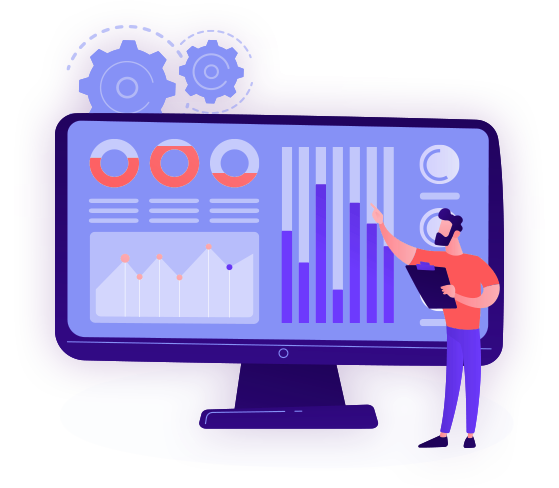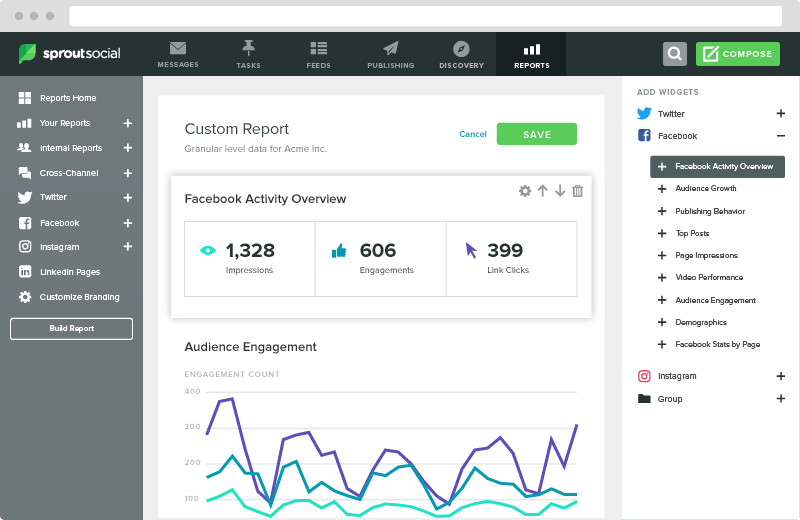M edia monitoring is more important than ever in 2022, and we all know that. No matter the business you're working for, you understand the power of knowledge. Information gives you leverage, it is an asset that allows you to make better business decisions. That is exactly what media monitoring gives you - information and data about any topic/brand/business/marketing or media campaign.
We've prepared quite a discovery on the topic so be prepared and ready to take action by using the power of media monitoring.
- Media Monitoring: What Is It
- Types of Media Monitoring
- Why Media Monitoring Is Important
- How Does Media Monitoring Work?
- What Does a Media Monitor Do?
- Do You Need Media Monitoring?
- 7 Reasons to Do Media Monitoring
- What Should You Monitor
- How Do You Monitor Media Coverage
- Who Should Be Using Media Monitoring
- Types of Media Monitoring Tools
- 5 Best Media Monitoring Tools
- Media Monitoring Reporting
- How Much Does Media Monitoring Cost
Media Monitoring: What Is It?
Media monitoring is a technique of finding out conversations about your brand/business, trends, insights in your industry, or tracking various keywords or conversations and any other topic based on what people are talking about online.
It has 3 dimensions: find out what everybody is talking about everything you want to track, on the world wide web (except private platforms and personal information).
The web is like the ocean: you can't comprehend its true dimension, how much information there is, and its countless number of channels (websites, social accounts, forums, groups, platforms).
Brand monitoring is the way to organize all that data based on what people are saying about your business and apply any filter you want.

Social listening allows you to see what people are saying about your business in real-time. You can spot real conversations, articles, and reviews. You can find unfiltered opinions about your business and turn them into opportunities.
Respond to what people are saying and jump right in to join the conversation. Reach out to them, respond to questions, show them you are a reliable brand.
Take advantage of social listening to build your brand reputation, increase brand awareness and even spy on your competitors.
Types of Media Monitoring
According to the type of media that exists, we can differentiate three types:
1. Digital and social media monitoring means tracking mentions on websites, public forums, blogs, social platforms (such as Facebook, Twitter, Instagram, Youtube). Basically, it tracks everything that happens on digital.
Online media monitoring is more complex; it uses tools, sophisticated algorithms, and the latest technologies to track online mentions. Based on the accuracy of the tool, it will curate thousands of mentions to find the most relevant and useful mentions for you. There are lots of options you can choose to best fit your business.
2. Print media monitoring is the second typology and it includes periodicals, newspapers and magazines. As the name says, everything there is printed. Although print media is declining, there are still 28.5 million papers distributed in 2018 according to Pew Research during weekdays and over 30 million on Sundays. People still consume print media.
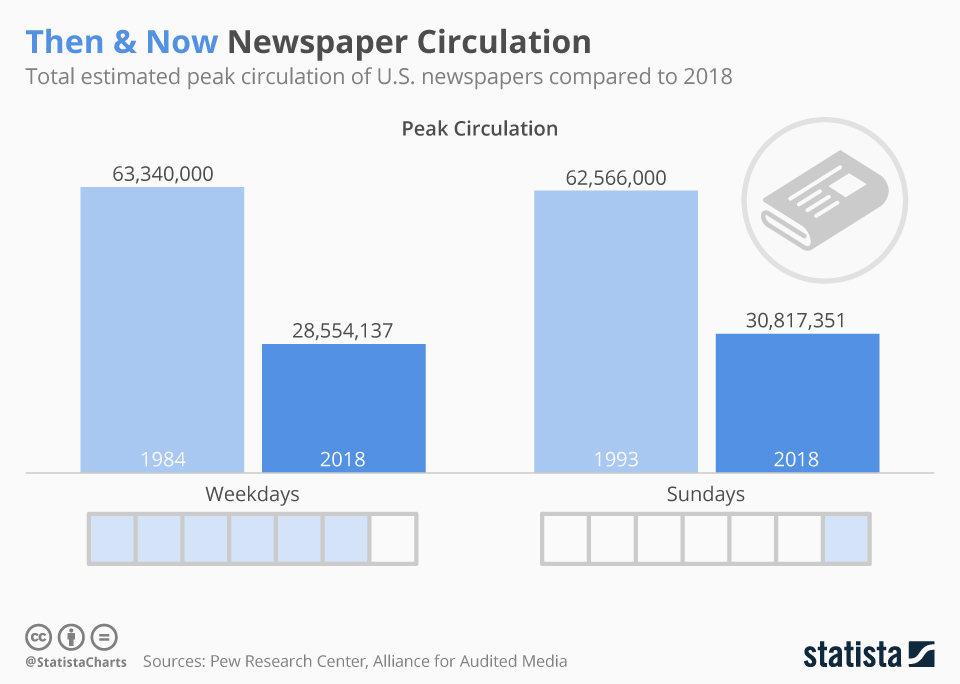
There are lots of people who read newspapers and numerous businesses that spend money on print ads. To be more specific, a third of ad spending is traditional. In this business, tracking and monitoring print publications is a challenge and requires professionals and dedicated services for accuracy.
Print monitoring services extract print media mentions that are important for public relations, brand reputation, brand, and business communication.
3. Broadcast monitoring tracks all the mentions that happen "on-air". You can find what the media says and when it is said. This type of monitoring helps you stay on top of everything that airs on TV and radio.
You can use broadcast monitoring to track any mention of your brand/business/organization or you can work with specialized companies that create media reports detailing all coverage including metrics, trend analysis, and relevant information.
Why Media Monitoring Is Important
It is important because it gives you an honest overview of what your actual clients or potential clients are saying about your brand/products/company based on sentiment analysis.
Sentiment analysis has the power to quickly sort negative from positive mentions, so you can better craft a communication strategy for your brand.
The most important aspect is knowledge of people's opinions. Back in the days, to find out what people thought of your products/brand you'd have to elaborate comprehensive quality research: set up interviews, perform focus groups. It took time and money, plus it was really hard to process and sort all the data and draw conclusions.
Nowadays, media monitoring tools make it easy and professional by collecting all data (from various sources) and getting dashing reports with just a few clicks.
But that's not all, media monitoring has lots of other perks that make it important:
- Find out what your competitors say about you (not only your clients).
- Spy on your competitors (see any marketing and PR campaign they are running, find out what clients say about them, and you have the chance to scoop in and drive them to your company).
- Measure (local, national, international) coverage impact on social media and more.
- Track real-time conversations and offer support to your customers.
- Find niched and relevant influencers for your business using engagement metrics, number of followers, number of social mentions, comments, and more.
- Build brand reputation and avoid reputation management crisis.
- Track viral success.
- Be aware of any industry trends.
- Research new topic ideas and generate new ad campaigns.
- For SEO purposes, build links on websites that mentioned your brand and haven't linked to your website yet.
How Does Media Monitoring Work?
Now that you know what media monitoring is and why is it important, let's find out how it works.
If you choose a tool, it will do most of the job. The process follows the steps below:
1. First, you choose one or more keywords based on what you want to monitor. It can be the name of the brand/company, a focus keyword, a product name, and so on.
For example, if you use BrandMentions, you can add the keyword right from the start.
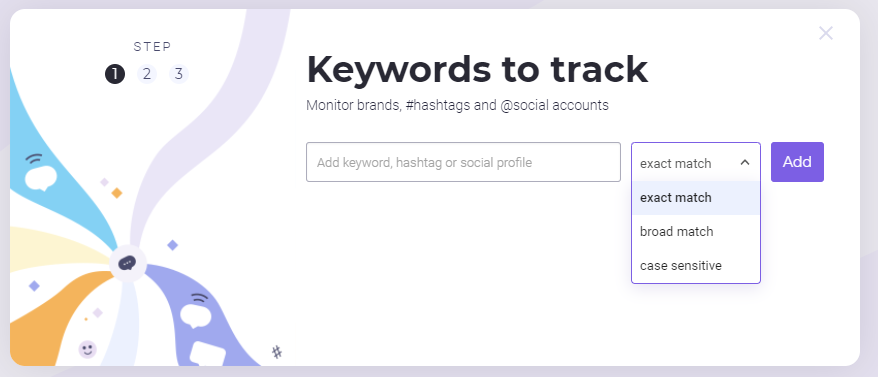
2. The second step is to set up filters and target the analysis (narrow down the results) based on the language of the mentions, localization, the sources you're interested in.
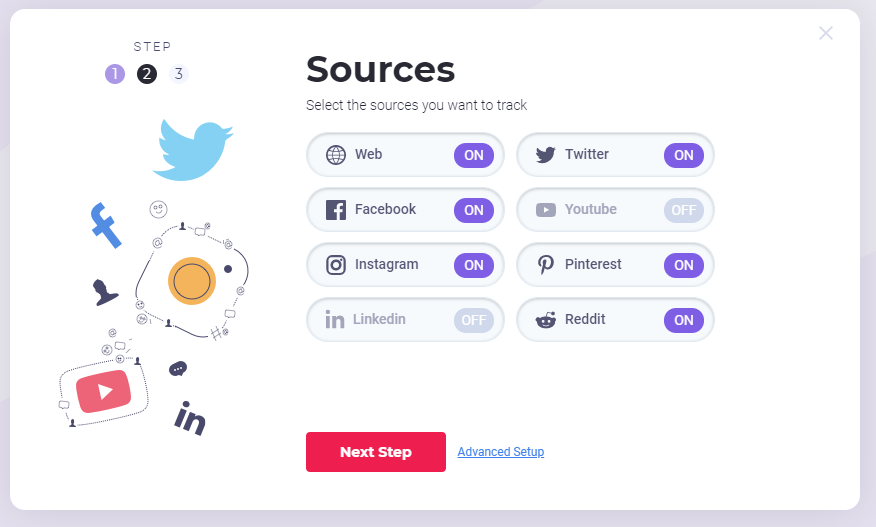
3. At this moment, the monitoring program/tool is crawling all the sources to gather the data for the tracked keyword based on your selection.
4. The fourth step happens when you start analyzing the results, filter them, choosing your analytics metrics.
5. The last step is creating reports and generating actionable insights that you can share with your organization and make business decisions.
It is important to understand that these steps are a part of an ongoing process for the keywords you're monitoring and will continue to run like this for every new keyword you track.
Social media monitoring, even though part of the process, has a slightly different flow:
- Set up goals and purpose.
- Identify the best sources to track: even though you use certain media to communicate with your audience that doesn't mean they don't talk about you elsewhere.
- Select social listening tools based on your needs.
- Build up a template/dashboard with the most important data and follow a natural flow.
- Keep tracking and listening to what people say about the brand.
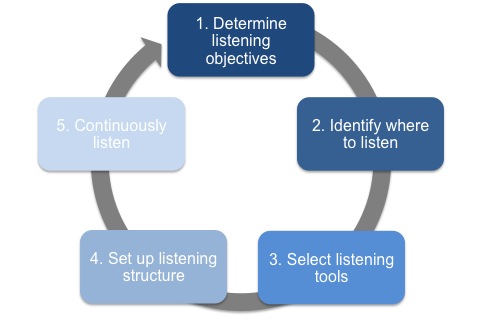
What Does a Media Monitor Do?
A person in charge of media monitoring is responsible of establishing your brand's goals and the monitoring strategy, tracking the data, measuring the results, creating reports and communicating them to higher management for future business decisions.
A media monitoring expert/responsible should have online marketing and digital strategy knowledge. A strong background in social media would be a high advantage. Plus some SEO knowledge will help in the process of elaborating more complex analysis and new marketing and content ideas for website growth.
The person in charge should be able to understand how brand monitoring works, and know the brand/company very well to pull out data, generate new marketing and business ideas, and establish future predictions for the company.
A person with great communication skills, outgoing and problem-solving powers will come in handy in online conversations for offering support, resolving negative feedback, and avoiding any bad reputation issues.
Do You Need Media Monitoring?
Monitoring your brand can turn up the light into a dark room. It can make it easier for you to understand what people think about your brand, your products or services, even about your customer support, your team, or anything related.

You get your audience's raw opinion, plus lots of other insights and filtered data.
Media monitoring is like bringing your whole audience to the same table and talk.
Moreover, you need it if you want to find out how visible your brand is on the web or social.
The online presence can be easily identified by using media monitoring platforms and tools. And you can even categorize it by medium or channel.
You will also need media monitoring if you want to outrank your competitors, by spying on their activity, on their audience, and track industry trends to grow your brand's performance online.
Investing in media monitoring is investing in your company's growth.
7 Reasons to Do Media Monitoring
By now, we hope you are convinced about the benefits that media monitoring brings. Yet, if you still want some more reasons to start doing media monitoring, here's what it can help you with:
1. Build a strong brand
Media monitoring helps you understand how people see your brand. Are there a lot of people mentioning it? Do they know that your brand exists? Do they understand what it is about? Do they still want to buy from you? Are they satisfied with what they are buying?
Depending on your answers, it can help you understand if your brand is visible online, easy to use, likable, correctly perceived, or none of the above.
Based on your discoveries, you can spot any misconceptions, miscommunications, lack of knowledge on the audience.
If you don't know your audience, your brand won't communicate the language of the customers. So, you won't be able to connect with them.
They might not be able to understand your brand or have the knowledge. You'd walk different paths.
Media monitoring connects your path to your audience's.
2. Reputation management and crisis management
Brand communication can easily go wrong if you mix up your audience. You can confuse it, it can become a PR crisis and affect your reputation.
But that's not all. Even if you're doing it right, there is always going to be someone unsatisfied with a big mouth online.
Negative reviews can easily rise, especially on social media platforms. Speed is the essence of these platforms.
The tone and what are you communicating really matter. Monitoring platforms can help you find out those that speak badly of your brand using Sentiment Analysis.
Celebrate those who gave you positive reviews, help or give answers to those that gave you negative reviews. Afterward, you can bring the whole conversation into private so you can easily manage them to avoid any fire alarms over your online reputation.
A prompt response shows your customers that you value and care for them.
3. Elevate your brand by collaborating with influencers
Media monitoring can help you discover influencers or key leaders with a high number of followers and engagement rate.
Collaborate with the right influencers, people that fit your brand. They know your business, they have used it, they can be advocates and help you promote it. Relevancy and honesty are great buds nowadays since the internet is full of weak commercials and irrelevant ads.
An example of an accurate influencer campaign is from Gymshark, which collaborates with lots of yoga instructors, gym fitness instructors and more. Kathryn and Kendra known as KKFit are fitness instructors and have promoted Gymshark's training apparel on Instagram numerous times.
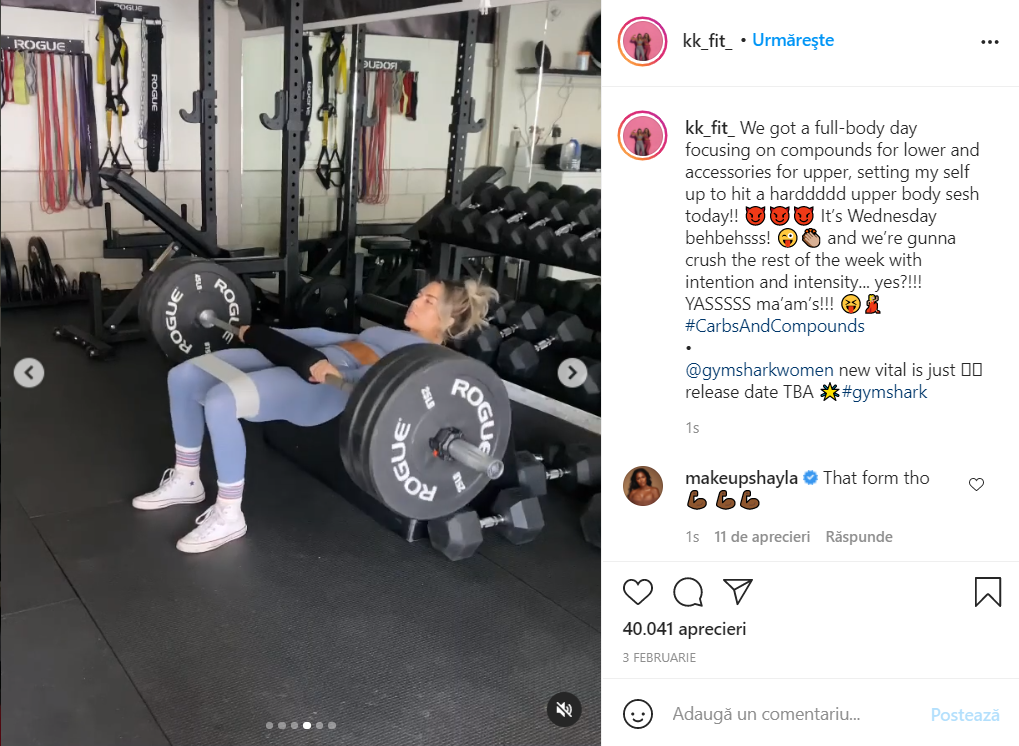
4. Make predictions by discovering industry trends
Media monitoring is great for discovering industry trends. If you search for a specific keyword, you can easily get mentions from various sources (even online news and journal websites) on the topic.
You can see who your competitors are, avoid mistakes or learn best practices based on what they did. Finding what they are up to will give you the advantage to be a step ahead of them.
5. Develop improvements and new business/product features
In relation to the previous reason, if you seek trends, you'll be able to develop improvements.
You can find new technologies, new research discoveries, new tools and features, latest developments and more. Knowing all that will, you can plan ahead, make predictions, adapt your brand strategy and online communication.
6. Improve SEO by finding new content ideas
As a content writer, often times we find ourselves out of ideas, not knowing what to write next. Using a tool to track keywords will help you get some topics and generate future blog posts.
Based on the results you get, you'll be able to generate new content ideas.
You can see which topics sparked some interest based on engagement and performance metrics. This way, you'll know what to write to attract your audience.
You'll also improve your SEO and target other keywords to rank for and have relevant content for your audience.
If people love your blog posts, the search engines will love them, too.
That means higher rankings, higher visibility on Google and more customers for your brand.
7. Discover your media (and social) coverage
When people like something online, they react: share, follow, comment. Nonetheless, not all the time they will tag your brand. A brand monitoring tool will collect all those mentions and help you understand how visible your brand is, and when people share their opinions.
Is your online presence high or low? Which social channel has more traction? Does your content reach your audience? Do they get the reaction you've intended?
Answering those questions will give you a clue on your media coverage. If you want to get in more details, go for each individual social media channel and see the number of mentions, engagement rate, sentiment analysis.
What Should You Monitor
The brand name is one of the most monitored terms. If you want to find out everything about a brand, you should first monitor your brand name and variations of it. That applies to the competitors as well, to spy on their brand. Of course, within the "brand name" you can monitor as well taglines, slogans or catchphrases.
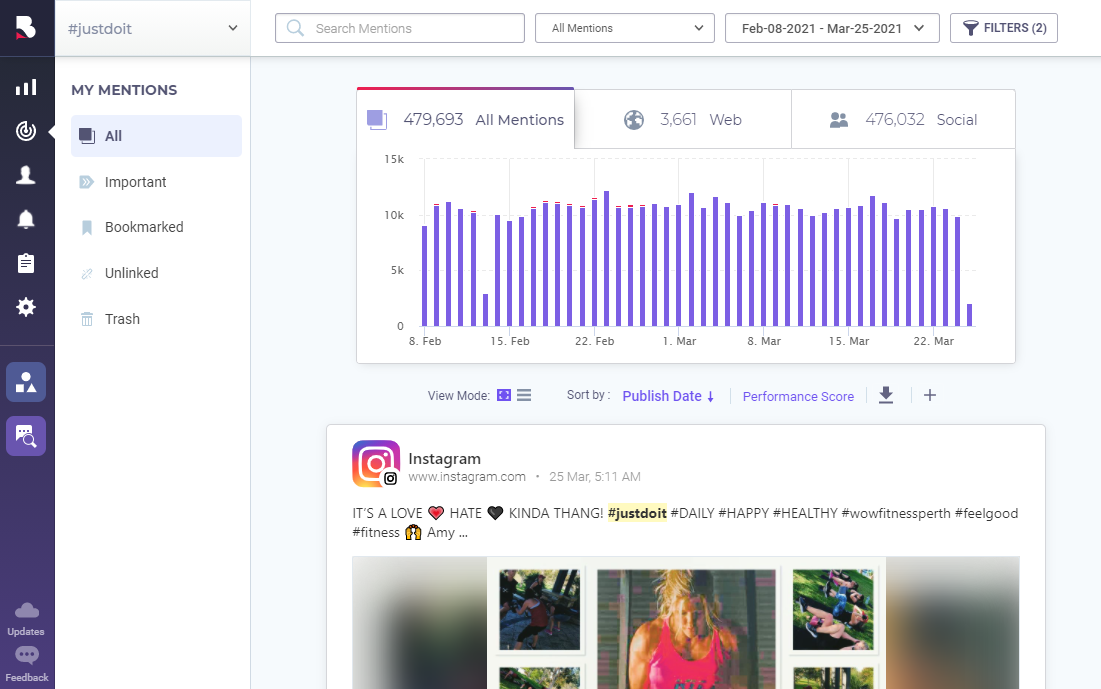
Another monitored term can be a product name/category. For a more thorough analysis, a more specific tracking, or for an enterprise with lots of products and mentions, you should monitor your most popular products, or newly launched products to see how well they are perceived. This way you'll be able to make future predictions for particular products.
Monitor personal brands. For big companies, also monitoring the manager's or the CEO's names is very relevant. It can be handy for anyone that wants to build an online image. You can use it to keep monitoring yourself/your name (if you have a personal brand). Plus, it can help them understand if their image fits the business and see if there's a relevant connection between those two.
You should monitor keywords to find new content ideas and industry trends.
Track hashtags if you're running a digital marketing campaign to see the engagement rates, performance metrics, top influencers, and other data.
How Do You Monitor Media Coverage?
Media coverage refers to all the content issued by a company: blog posts, RSS feeds, video content, podcasts and all digital content created by the brand and everybody that talks about it. It also includes earned media, the publicity you gain from people that talk about your company for free.
Monitoring your media coverage is tracking all those places where your brand is mentioned online. For that you'll need tracking tools.
For example, BrandMentions tracks lots of sources and offers the possibility to personalize your media tracking by choosing your desired platforms.

Analyzing media coverage can help you understand your performance in terms of brand awareness and market presence, plus all the insights we've previously talked about.
Who Should Be Using Media Monitoring?
Media monitoring and analysis should be used by brand managers, PR and marketing experts, journalists, social media specialists, public figures or someone in public administration, personal brands, CEOs, investor relations, influencers, employees, and basically anyone or any marketing agency that wants to track certain brands or keywords.
To get into detail, let's elaborate on some of the most common examples.
- Brand managers that want to track the brand and all related information.
- CEOs and personal brands to be aware of their online image and the influence of that image on the brand itself.
- Influencers, who want to be aware of what people are saying about them, track audience interaction with their projects.
- Media marketing managers and responsibles that want to track certain campaign names and get all the data from all online sources. Plus, it will help them gain insights on what went well or wrong based on people's opinions.
- PR pros for tracking press releases, analyzing media coverage and managing media crises.
- And basically, everyone that works online and wants to get new content ideas, find industry trends, gain a competitive advantage, get industry insights, and more.
Types of Media Monitoring Tools
At the moment, we can speak of three types of media monitoring tools:
- free tools;
- paid tools
- premium tools.
They are categorized this way based on the package they are offering, and the complexity of tools.
Free tools are standard and don't offer lots of possibilities; they don't have a large database or reporting options.
Affordable tools are paid options with more metrics, larger databases, more insights and reporting dashboards available.
Premium media monitoring tools have in addition more complex algorithms and technologies (for example AI), personalized support and consulting services.
5 Best Media Monitoring Tools
1. Google Alerts is a free easy-to-use tool to track brand mentions. Anyone with a Gmail account can use it to receive notifications based on their tracked keywords.
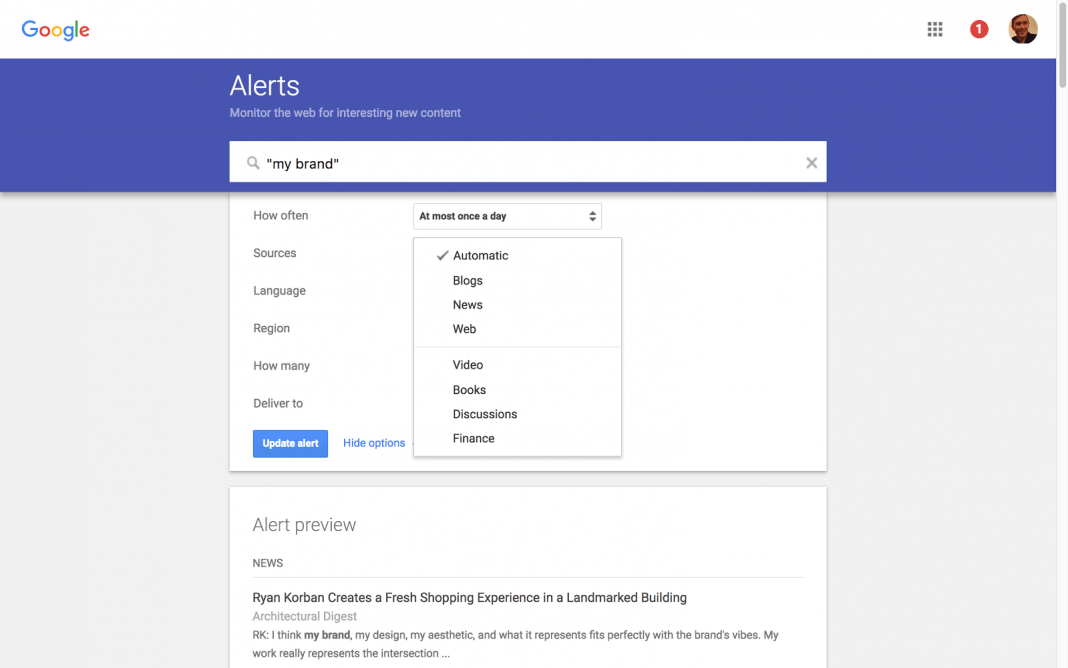
Google Alerts sends you email notifications and it can be used for media monitoring.
In just a few steps you can set up your Google Alerts: sign in to your Gmail account, go to google.com/alerts, search for the term you want to track, select notification frequency and that's it!
2. BrandMentions is a paid media monitoring tool, available with a basic plan or a premium version, as well.
The tool has lots of features to help you keep up to date, be connected with everything that's said online about the product, get comprehensive sentiment analysis, real-time monitoring, competitive analysis, and more.
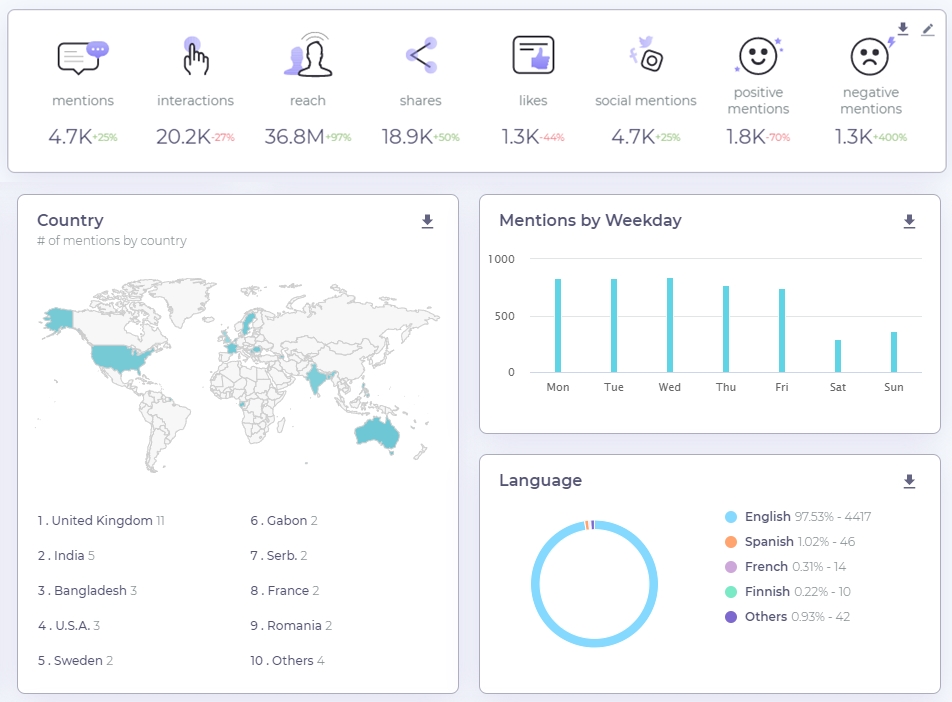
In just a few moments, BrandMentions tracks your keywords and collects your data. It is great for brand awareness and measuring the success of your communications and marketing campaigns.
3. You can use BuzzSumo to generate ideas, create high-performing content, identify popular content and influencers and monitor your performance.
Buzz would refer to the continuous humming or murmuring sound, made by or similar to that made by an insect. Sumo is the Japanese form of heavyweight wrestling, the one with funny outfits in which a wrestler wins about by forcing his opponent outside a marked circle or by making him touch the ground with any part of his body except the soles of his feet. Therefore, should sum up both "noise" monitoring + getting rid of competitors.
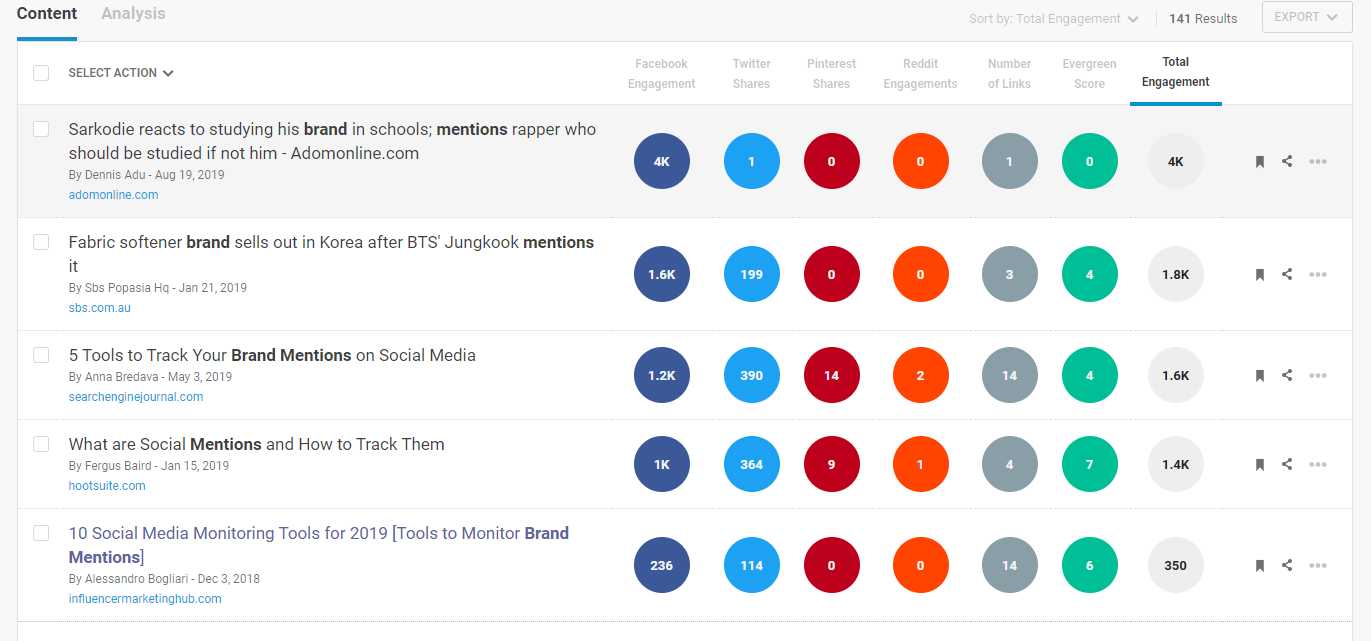
4. Hootsuite is an all-in-one social media management tool. You have all your social media channels in one place, allowing you to manage them more efficiently and get all the insights you'll need for future improvement. The tool makes it easy to schedule, curate content, monitor, analyze analytics, manage your team members and protect your brand setting security alerts.
The analytics metrics and features allow you to find fresh insights with the largest selection of social analytics integrations and apps anywhere, including Brandwatch, KAWO for WeChat and Weibo, Talkwalker, and Unmetric.
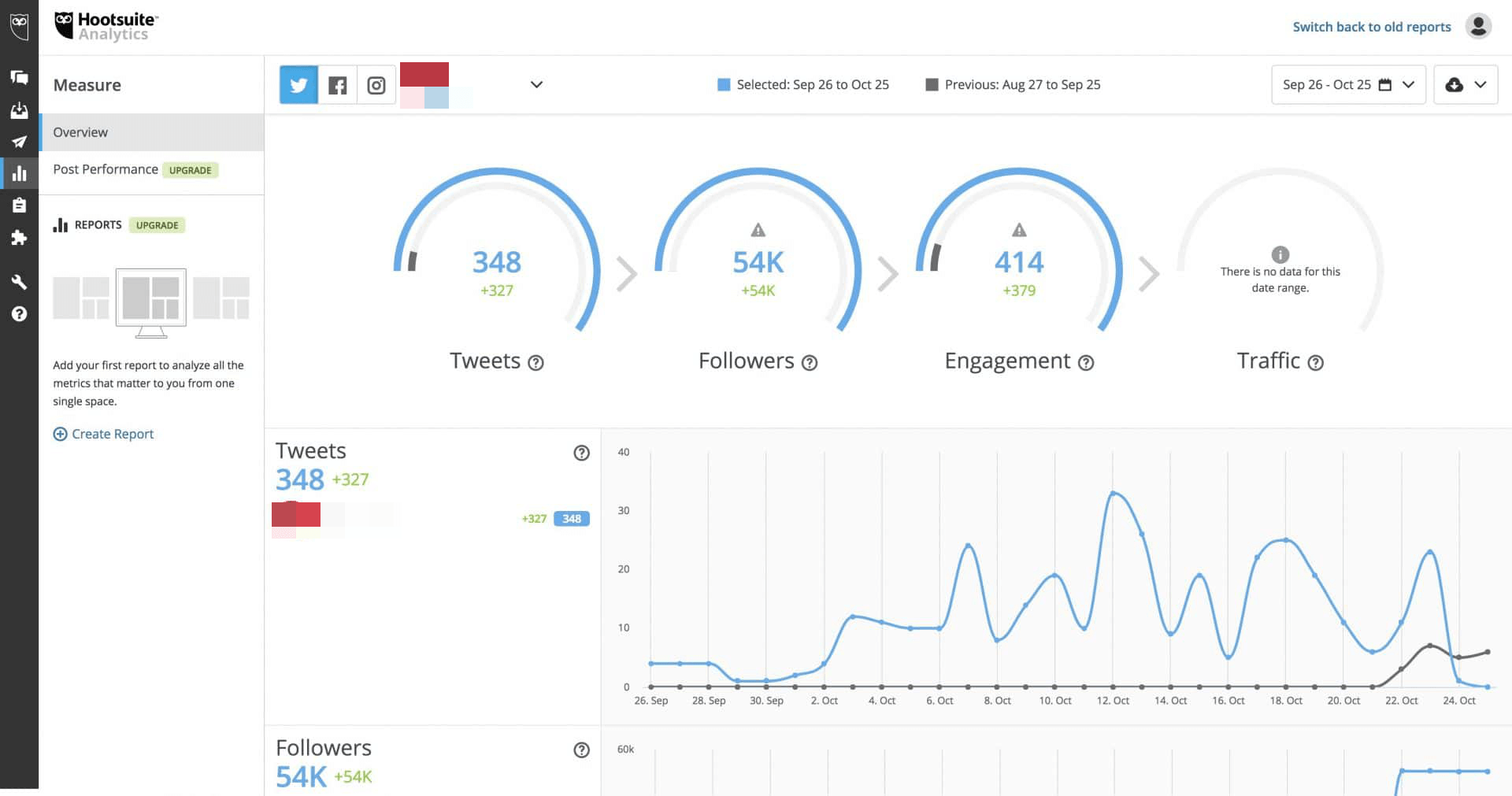
5. Sprout Social is a social media management software. You can use it if you want to understand your social media performance, manage your social media channels more effectively, respond to messages and prepare social reports.
Media Monitoring Reporting
Reporting is a very important feature. The tools offering great insights, categorized data and user-friendly graphs are highly desirable. Reporting can help you gain valuable and actionable insights.
Plus, it can help you see if all your PR efforts and digital strategies worked.
That's why we use tools and platforms, to get data and see analysis reports so that you can make business decisions and understand how the brand is perceived online.
There are some things you should be aware of when choosing a monitoring tool: multiple sources to choose from, user-friendly dashboard, personalization and filtering options, customized reports, plus other features you might need.
Media monitoring reporting is the essence of all the hard work performed by the tool after collecting mentions. You need to cherish it.
How Much Does Media Monitoring Cost?
As previously mentioned, there are lots of options in terms of costs. You can use free monitoring tools with limited features and reporting options, such as Google Alerts.
You can find tools that are under $50, that are great for small businesses or startups to monitor a single brand and optimize the social profiles.
There are also more complex tools, with numerous features, tracked keywords, resources and large storage for collected mentions that can reach up to $500 for enterprises.
Based on your needs and budget, you can find the best option for you. There are lots of options, features and tools you can choose from.

